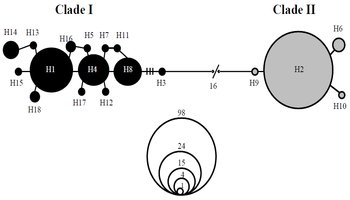VOLUME 7 NUMBER 2 (July to December 2014)

Philipp. Sci. Lett. 2014 7 (2) 317-323
available online: September 21, 2014
*Corresponding author
Email Address: demianwillette@hotmail.com
Received: August 23, 2013
Revised: May 9, 2014
Accepted: May 17, 2014
ARTICLE
Genetic diversity and the discovery of a putative cryptic species within a valued crab fishery, Portunus pelagicus (Linnaeus 1758), in the Philippines
2National Fisheries Research and Development Institute, Quezon City, Metro Manila, Philippines 1103
32141 Terasaki Life Science Building, 610 Charles E Young Dr South, University of California Los Angeles, Los Angeles, California, United States 90095
The blue swimming crab, Portunus pelagicus (Brachyura, Portunidae), is a widely distributed crab species across much of the Indo-West Pacific. A recent taxonomic revision based on morphological and genetic divergence between populations across the species’ vast range has revealed that the species is actually a four-member species complex. These species,P. pelagicus sensu stricto, P. reticulatus (Herbst 1799), P. armatus (A. Milne-Edwards 1861), and P. segnis (Forskaål 1775), have juxtaposed ranges with some peripheral regions of overlap. The species P. pelagicus sensu stricto is believed to be the sole representative of this species-complex occurring across the entire Philippine archipelago. Here we test this assumption using the mitochondrial Cytochrome oxidase sub-unit I gene region and identify the presence of two Portunus species, P. pelagicus sensu stricto and a previously identified but un-described Portunus species from Japan. We describe the geographic distribution and genetic diversity of each crab, potentially two species that occur in sympatry but are genetically distinct. This study pro- vides valuable insight into the mtDNA sequence diversity of a highly valued crab fishery in the Philippines, a fishery that is currently managed as a single species.
© 2025 SciEnggJ
Philippine-American Academy of Science and Engineering